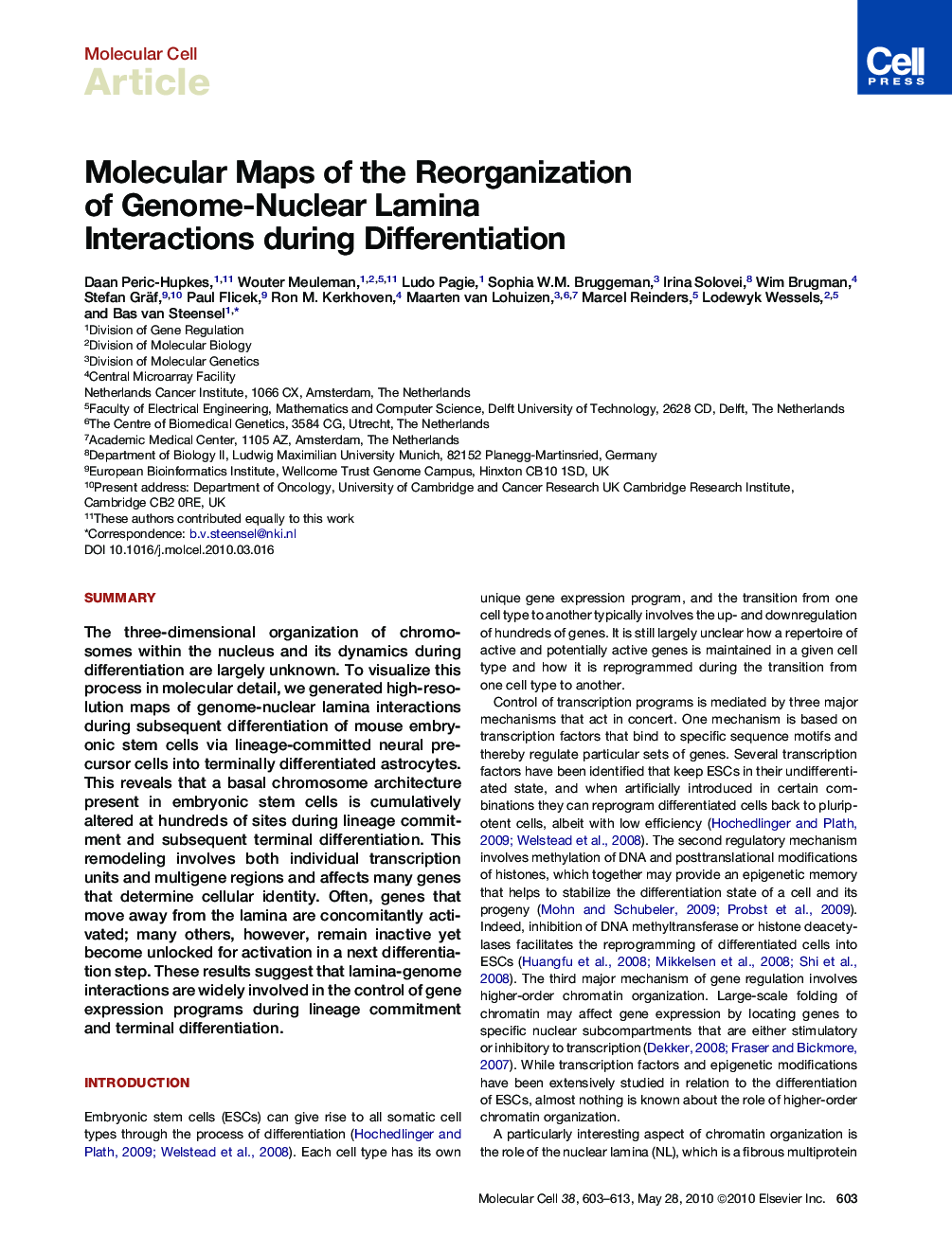| Article ID | Journal | Published Year | Pages | File Type |
|---|---|---|---|---|
| 1997398 | Molecular Cell | 2010 | 11 Pages |
SummaryThe three-dimensional organization of chromosomes within the nucleus and its dynamics during differentiation are largely unknown. To visualize this process in molecular detail, we generated high-resolution maps of genome-nuclear lamina interactions during subsequent differentiation of mouse embryonic stem cells via lineage-committed neural precursor cells into terminally differentiated astrocytes. This reveals that a basal chromosome architecture present in embryonic stem cells is cumulatively altered at hundreds of sites during lineage commitment and subsequent terminal differentiation. This remodeling involves both individual transcription units and multigene regions and affects many genes that determine cellular identity. Often, genes that move away from the lamina are concomitantly activated; many others, however, remain inactive yet become unlocked for activation in a next differentiation step. These results suggest that lamina-genome interactions are widely involved in the control of gene expression programs during lineage commitment and terminal differentiation.
Graphical SummaryFigure optionsDownload full-size imageDownload high-quality image (110 K)Download as PowerPoint slideHighlights▸ Various cell types share a core architecture of genome-nuclear lamina interactions ▸ During differentiation, hundreds of genes change their lamina interactions ▸ Changes in lamina interactions reflect cell identity ▸ Release from the lamina may unlock some genes for activation
